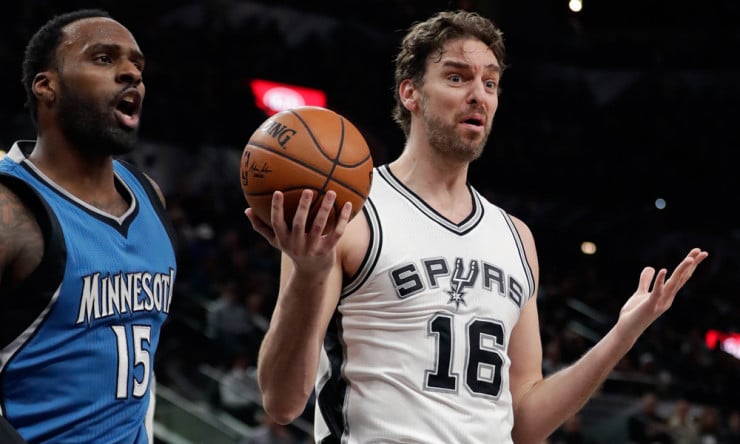Blocking Foul in Basketball

Have you ever wondered how basketball keeps things fair and exciting? Well, just like any game, basketball has its own special rules that players and fans need to know. Fouls are a big part of these rules, and one kind of foul that can really change the game is called a blocking foul. In this article, we’re going to take a closer look at what blocking fouls are, how they happen, and what they mean for the players and teams on the court. It’s like uncovering the secrets of basketball’s rulebook!
Blocking Foul in Basketball
In basketball, a blocking foul happens when a defensive player tries to stop an offensive player who’s moving. It usually means they did something wrong, like pushing or bumping the offensive player or getting in their way. What the defensive player is supposed to do is make sure they’re in the right position before the offensive player tries to shoot the ball. This way, the game stays fair, and everyone plays by the rules.
How a Blocking Foul Occurs
Blocking fouls occur in specific scenarios, often when the defensive player fails to establish the proper position. Here are two common situations in which a blocking foul can happen:
- Moving into the Offensive Player’s Path: When a defensive player steps in the way of an offensive player who’s already moving, something called a blocking foul can happen. To avoid this, defensive players need to predict where the offensive player is going and get into the right position. It’s all about being in the right place at the right time on the basketball court.
- Failure to Establish Legal Guarding Position: To draw a charge, a defender must establish both feet and their torso in the path of the offensive player. If they fail to do so and initiate illegal contact, a blocking foul will be called.
Key Elements of a Blocking Foul
To better understand what constitutes a blocking foul, let’s examine its key elements:
- Illegal Lateral Movement: The defensive player must move vertically, not laterally, to maintain a legal guarding position. Lateral movement can lead to a blocking foul.
- Failure to Establish Position: The defensive player must establish their position early enough to give the offensive player time and space to change direction. If the defensive player arrives late, a blocking foul is likely.
- Impeding Progress without Proper Positioning: Defensive players should not impede the offensive player’s progress unless they have established a legal guarding position. Blocking fouls occur when defenders make contact without being properly positioned.
Common Mistakes Leading to Blocking Fouls
Players often make certain mistakes that result in blocking fouls. Some of these mistakes include:
- Sliding Laterally: Instead of moving vertically to maintain position, defenders may slide laterally, which increases the likelihood of a blocking foul.
- Insufficient Spacing: Failing to provide enough space for the offensive player to make a move or change direction can lead to blocking fouls.
- Inappropriate Use of Hands: Extending arms or using hands to impede the offensive player’s progress is a common mistake that results in blocking fouls.
Consequences of a Blocking Foul
Blocking fouls have consequences for both teams and players:
- Awarding Free Throws: The fouled offensive player is awarded free throws, providing them with an opportunity to score points without opposition.
- Team Fouls: Accumulation of team fouls can lead to bonus situations, where the opposing team shoots free throws even for non-shooting fouls.
- Player Disqualification: Players can be disqualified from the game if they accumulate a certain number of personal fouls, including blocking fouls.
Strategies to Avoid Blocking Fouls
To minimize the risk of committing blocking fouls, players can employ the following strategies:
- Work on Defensive Positioning and Footwork: Proper positioning and footwork are essential for maintaining a legal guarding position.
- Anticipate the Offensive Player’s Moves: Experienced defenders learn to anticipate the offensive player’s actions and react accordingly.
- Maintain Proper Spacing and Balance: Providing adequate space and maintaining balance helps defenders avoid unnecessary contact.
Blocking Foul in Basketball Hand Signal
In basketball, a blocking foul is signalled by the referee extending one arm horizontally with an open hand, palm facing down. This signal shows that a defensive player didn’t have the right position and fouled by bumping or obstructing an offensive player in motion.
Blocking Foul Example
Referee’s Perspective
Referees play a crucial role in making judgments on blocking fouls. They consider factors like positioning, timing, and the presence of illegal contact when making their decisions. Understanding how referees view these situations can provide players and fans with a deeper appreciation of the game’s complexity.
Conclusion
Blocking fouls are a fundamental aspect of basketball, and understanding them is essential for both players and fans. By grasping the definition, causes, and consequences of blocking fouls, players can improve their skills and contribute to fair and exciting basketball games. So the next time you watch a game, keep an eye out for these fouls, and you’ll have a deeper understanding of what’s happening on the court.
Related Content
- How High Is A Basketball Rim?
- What Is A Rebound In Basketball?
- What Is A Carry In Basketball?
- Basketball Court Diagrams

I’m James Ritter, a sports enthusiast. I’ve played sports since school, and now I enjoy writing about them. My goal is to inspire aspiring athletes through stories of success and determination. I believe anyone can achieve greatness with the right guidance. I aim to make a positive impact on the sports community by sharing stories and insights, connecting my love for sports and writing. Join me on this journey of inspiration for all sports lovers.








